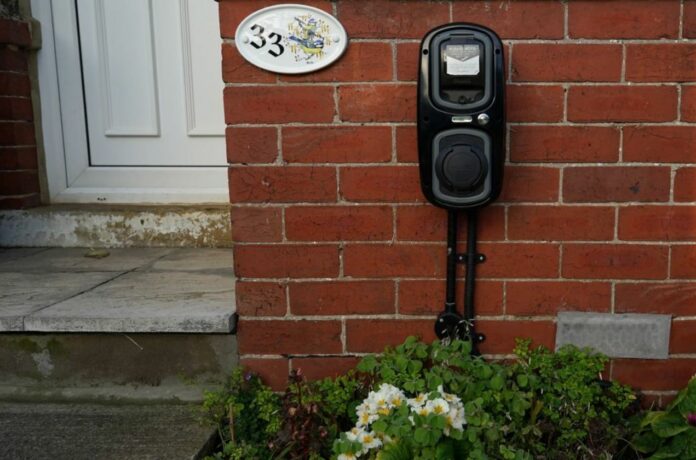Most owners of electric vehicles charge their vehicles overnight or in the evening at home. A new study from Stanford says that we are doing it wrong.
In March, the research group published a report on a charging demand model they developed that can be applied to a wide range of demographics and other circumstances. They applied their model to the entire western United States in the latest study, which was released today in Nature Energy, and looked at the strain that increasing EV ownership will place on the region’s electric system by 2035.
They discovered that rapid EV adoption alone might increase peak electricity demand by up to 25% in less than ten years, assuming home nighttime charging continues its current dominance.
According to the experts, to minimise the high costs of all that extra capacity for generating and storing electricity, drivers should switch to daytime recharging at office or community charging points, which would also cut emissions. This result has policy and investment ramifications for the region and its utilities, especially since California announced in late August that it would prohibit the sale of gasoline-powered cars and light trucks beginning in 2035.
Ram Rajagopal, an associate professor of civil and environmental engineering at Stanford University and a co-senior author of the study, urged regulators to take into account utility prices that support day charging and stimulate investment in charging infrastructure.
In February, total EV sales in California hit 1 million, or nearly 6% of all vehicles and light trucks sold. By 2030, the state wants 5 million EVs on the road. According to Rajagopal, without considerable expenditures and a shift in charging patterns, the grid will encounter significant stress when penetration reaches 30 to 40 percent of vehicles on the road. That infrastructure must be built over an extended period of time; it cannot be done quickly.
“We considered the entire western U.S. region,” lead author Siobhan Powell, “because California depends heavily on electricity imports from the other western states. EV charging plus all other electricity uses have consequences for the whole western region given the interconnected nature of our electric grid.”
They “were able to show that with less home charging and more daytime charging, the Western U.S. would need less generating capacity and storage, and it would not waste as much solar and wind power.”
“And, it’s not just California and western states,” adds Powell, “all states may need to rethink electricity pricing structures as their EV charging needs increase and their grid changes.”
If present charging habits continue, more than 5.4 gigatonnes of energy storage will be required once 50 percent of automobiles are on the road in the western United States — of which almost half the population lives in California.
That is equivalent to five big nuclear power reactors in terms of capacity. The amount of storage required for EVs would drop to 4.2 gigawatts with a significant shift toward charging at work rather than at home.
Incentives change
Time-of-use rates encourage people to do things like run the dishwasher and charge electric vehicles at night whenever they can. This rate structure dates back to a time before there were major solar and wind energy supplies, when supply during the day, particularly in the late afternoons of the summer, threatened to be insufficient to meet demand.
Due primarily to its solar potential, California now has extra electricity in the late mornings and early afternoons. Cheaper electricity may be put to better use if most EVs are charged at certain times. Alternately, if the majority of EVs continue to charge at night, the state will need to construct more generators, which are probably powered by natural gas, or pricey, extensive energy storage. The electricity that goes to a big battery first and then to an EV battery loses power because it has to go through two different places.
Locally, the grid may become unstable if a third of the residences in a neighbourhood have electric vehicles and the majority of their owners continue to schedule charging to begin at 11 p.m. or whenever electricity prices decrease.
“The findings from this paper have two profound implications: the first is that the price signals are not aligned with what would be best for the grid – and for ratepayers. The second is that it calls for considering investments in charging infrastructure for where people work,” adds co-senior author Ines Azevedo.
“We need to move quickly toward decarbonizing the transportation sector, which accounts for the bulk of emissions in California,” Azevedo says. “This work provides insight on how to get there. Let’s ensure that we pursue policies and investment strategies that allow us to do so in a way that is sustainable.”
Another problem with how electricity is priced is that commercial and industrial customers are charged big fees based on how much electricity they use at peak times. Employers may be discouraged from doing so if at least half of their workforce owns electric vehicles.
The research team evaluated various scenarios for the availability of the charging infrastructure, as well as various home time-of-use prices and business demand charges. Some rate changes made things worse on the grid, while others made things better. The analysis discovered that the biggest advantages came from a charging infrastructure that promotes more daytime charging and less at home.
Source: 10.1038/s41560-022-01105-7
Image Credit: Getty
You were reading: EV Charging: You’re Probably Doing It Wrong – New Stanford Study Says
